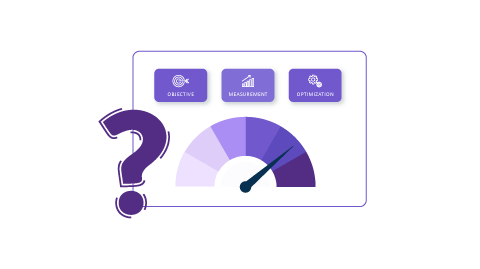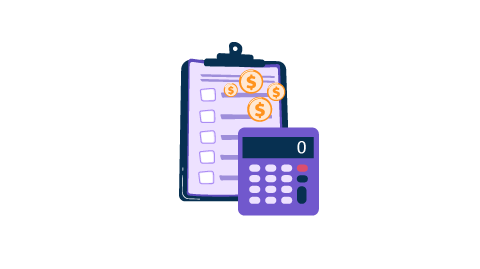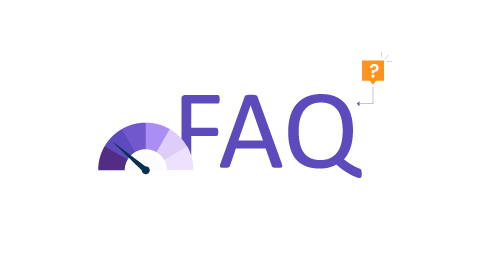The Ultimate Guide On Understanding KPI
One of the first tasks of success is measurement. To have a successful business, you must know where you stand and where you must go. In this regard, you need to measure your current status first and plan on how to maximize your number later.
To compute this value in the workplace, Key Performance Indicators or KPI's are the industry-standard tool for all corporates. They calculate numerous aspects of a business. These can be profitability, costs, goals, performance, engagement, and the list goes on.
Seeing the vast application of KPI, you must understand it better. So today, we're breaking down this concept in terms of engagement to help you measure employee engagement levels. Let's get started.
What is KPI?

Key Performance Indicators (KPIs) are a measurable value that tells you how certain business areas are doing. These areas can be on sales, performance, marketing, HR support, etc. Based on these, there are many types or examples of KPI.
Let's have a look at a few of these common examples of KPI in the workplace.
While no one can pinpoint KPI's origins, experts believe that Emperors of the Chinese Wei Dynasty (3rd Century) were the first to use a rudimentary KPI system. They used it to judge the performance of their family members.
Common Examples of KPI

1. Financial KPI
A. Profit
It calculates and gives you an idea of how your company performs at the net profit and gross profit numbers.
B. Cost
The cost KPI will help you ascertain and monitor your company's cost management performance.
C. Revenue versus Target
Revenue vs. Target helps you establish a relationship between your projected revenue and actual revenue.
D. Regional Sales
This KPI helps you ascertain the sales of your products and services in different regions. Understanding this can help you figure out the low performing regions of your business operations.
E. Expenses versus Budget
The expenses vs. budget KPI helps you understand the difference between your projected expenses and your budget's actual expenses. Knowing this can help you know your costs better and plan your budget accordingly.
2. Customer KPI
A. Customer Lifetime Values
This KPI helps you ascertain the value a customer brings to your business during their time consuming your services.
B. Consumer Acquisition Cost
Consumer acquisition costs help you understand the cost you incur whiling procuring a customer. This KPI is crucial for marketing teams to identify their channels for customer outreach.
C. Customer Retention
It makes you identify the customer retention value of your business.
D. Gain/Loss of Customer
This KPI helps you understand your customer acquisition in a specific time frame.
3. Business Processes KPI
A. Customer Support
This KPI helps you ascertain your performance in terms of customer support. It shows how many problems you resolved per day, week, or month.
B. Defective Products
It helps you understand your frequency of producing faulty products in your production line for a certain period.
C. Efficiency
The efficiency KPI helps you understand your workforce's efficiency levels when it comes to different business operations.
4. People KPI
A. Employee Turnover
This KPI helps you measure your worker turnover ratio, i.e., how many of your workers left your company in a specific time frame.
B. Employee Satisfaction
An employee satisfaction KPI helps you understand your worker's satisfaction levels at work.
C. Promotion vs. Hires
The promotion vs. hires helps you understand which people get the most opportunities in your company. It can be either your in-house workers or external hires.
Computing these examples of KPI gives you a fair idea of a particular department's current status and your business metrics. After knowing the position, you can better map out a route to better results. Apart from this, KPI's have many other advantages of business performance as well. Let's have a look at a few of these in brief.
Financial KPIs are some of the most widely used KPIs; hence you can regard it as the most common KPI in the workplace.
Advantages of knowing your KPI

1. Scientific Value
Scientific values are always the best indication of performance. Understanding this, you must have scientific values to measure employee performance. In this regard, KPIs are an excellent tool as they are quantifiable values of performance.
2. Marker for Future Strategy
The KPIs provide a fair picture of the current status of a department. It helps one understand the current situation and plan better for future strategic goals. This, in turn, makes KPIs a marker for any future strategy.
3. Incentive for Performance
You can often use KPI as means of incentives for employees. The trick here is looking into the various performance KPI for sales, efficiency, etc., and providing incentives against better results.
4. Measure Results
KPIs are great for ascertaining the results of a new initiative or any changes in process or policy. It will help you understand the effects of a change pre-implementation and post-implementation. This aids in better planning for the long term.
5. Benchmark
KPIs, being widely used by corporates everywhere, are also great for setting an industry-standard benchmark. Likewise, you can ascertain how your specific departments are doing in terms of other industry competitors.
These were just a few of the advantages of computing KPIs in the workplace.
Now, as you may have understood from our common examples of KPIs section, these values come in many different types. Here, you must know which KPI you should apply to your workplace. To help you understand your relevant KPI, these are certain points that you should know.
How to choose your KPI

1. Computing Common Business Goals
There are specific KPIs for calculating some business goals common to all corporations. These can be for maximizing sales, revenue, site traffic, etc. For ascertaining these, you need to compute KPIs regarding daily sales, conversion rate, site traffic, etc.
Similarly, you need to ascertain the shopping cart abandonment rate, shipping rate trend, competitive price trends, traffic sources, promotional click-through rate, bounce rate, etc.
2. Focus on key metrics
Rather than looking at a plethora of KPIs, you should only look at the ones that concern your business. Looking into many different KPIs will make you lose sight of what is essential and confuse you.
So, based on your industry and company, you can track five to ten KPIs. Here, you need to research your industry-standard KPI and continue accordingly.
3. Company's current stage
There are different relevant KPIs for the stage in which your company is at any moment. It means that if you are a startup company, you'll have other KPIs, and if you are an established company, you will have a different KPI.
Here, in the early stages of business, you need to look into business model validation KPI. If you're an established business, you need to look into KPI like cost per acquisition, expenses vs. budget, etc.
4. Lagging and Leading Performance Indicators
These are the KPI that shows your results based on how you did and how you will be doing in the future. Here, Lagging KPI shows you the past results like sales, target achieved, etc. Leading KPI shows you the likelihood for projected future results like site traffic, conversion rate, etc.
Most companies look at lagging indicators because they are easy to compute as they already happened in the past. Companies don't look at leading indicators because it is predicated on the future, which can have many unforeseen factors into play.
But, companies must look at both these indicators to ascertain their accuracy of projection for better planning.
5. Different KPIs for various Industries and Business Models
Different Industries look into their own KPI that suits them best. For example, a SaaS company will look into KPI for customer acquisition, cost of acquisition, while a brick and mortar company will look into sales per foot, average cost, etc.
Therefore, through a little research, you need to understand which KPI applies to your industry and compute accordingly.
Always try not to look much at Vanity Metrics, which makes a product look good but doesn't add value. For example, while the number of downloads is vital for an App company, it does not say much about the product. Instead, looking at daily users is a better metric to understand how well a product is doing.
These were some points in knowing your KPI. Here, some people may say that they want something called "SMART KPI." Let's understand this.
What is a SMART KPI?

First of all, there is no such thing as a SMART KPI! It is instead a method to ascertain that the KPIs you select be a smart choice, which is abbreviated as follows:
S- Specific (What "specifically" you want to measure)
M- Measurable (How will you "measure" your goal)
A- Achievable (Are your goals realistically "achievable" within your company and means)
R- Relevant (Are the aspects you measure "relevant" to your business)
T- Time-Bound (The time frame for the goal, when do you think that you will achieve the goal)
For all the KPI that you are going to use, they have to satisfy all these attributes in the first place, or else your KPIs won't be effective. So, after deciding your KPI as above, comes the step to compute the KPIs.
Here, to compute the KPIs, let us help you a bit more by telling you about a few computing formulas for common KPIs.
The general flow of KPI should be establishing company goals, setting departmental goals, determining the KPI to assess those goals, measure and maintain the KPIs.
Formulas for Commonly-Used KPIs

Employee Tenure
Employee Satisfaction Index
Internal Promotion to External Hire Rate
Employee Promotion Rate
Voluntary Termination Rate
Salary Competitiveness Rate
Productivity
Absenteeism
Employee Retention/Turnover Rate
Employee Net Promoter Score
KPIs Calculator
These were some formulas to commonly used KPIs in a corporate body.
For our next topic, since we are a corporation specializing in employee engagement, let's talk about our niche’s KPI.
Don't measure more than 10 KPIs simultaneously as looking at a lot of values can make it tough to maintain and make necessary changes to improve on it. However, be sure to mix up your KPI according to changes in times and goals.
10 Essential KPIs For Measuring Employee Engagement

1. Employee Net Promoter Score
The employee net promoter score calculates the likelihood of your workers recommending working with you to other people. It has a positive effect on referral program of a workplace. This ultimately makes for better hiring strategies with greater efficiency and effectiveness in hiring.
2. Employee Retention/Turnover Rate
Employee retention is crucial in lowering HR costs and maximizing profitability. This KPI looks for your company's turnover rate. It will help you analyze which department is losing workers frequently that needs immediate attention.
3. Absenteeism
Absenteeism is a vital indicator of a worker's interest at work. Here, this KPI will help you ascertain that exactly. If you have a high absenteeism KPI, it shows an element of lack of employee motivation.
4. Productivity
This KPI looks at the productivity of the workplace. Employee productivity is the pillar of progress in the workplace. As such, you need to have the maximum outcome without harming workers' work-life balance and their and employee health.
Here, you can compute this value with the labor productivity equation. It will give you a monetary value of productivity per hour.
5. Salary Competitiveness Rate
Salary package makes up for a lot in one's job satisfaction. It gives that extra push to make a compelling case for the benefits of working for a company. So, you must offer a great package with a competitive benefits package.
6. Voluntary Termination Rate
Employee Termination affects engagement levels as well. Here, if workers resign themselves, it becomes a voluntary termination which is a massive red flag. Here, if you have an alarming rate, then you must give immediate attention to what is going wrong.
Companies generally calculate voluntary termination once a year.
7. Employee Promotion Rate
Employee Promotion is a useful tool to guide engagement. It shows that your workers have a future with you and increases employee development opportunities. As such, it becomes vital to calculate this KPI.
8. Internal Promotion to External Hire Rate
Sometimes you may not find the talent within your workforce for a promotion. In this case, you need to shortlist candidates externally and make the hire. Here, it is also essential to calculate this KPI for knowing the distribution of opportunities between your in-house workers and external hires.
9. Employee Satisfaction Index
This KPI computes employee satisfaction concerning a situation. It can help you understand in which cases a worker is unhappy. Likewise, you can plan better on how to drive satisfaction in the workplace.
10. Employee Tenure
Employee Tenure KPI will let you understand the average amount of time an employee stays with you. It will help you know how long you can hold onto workers. Here, the longer the period, the better.
These were some of the common KPI for measuring employee engagement. Now, let's have a look at a few of the frequently asked questions regarding KPI.
Understand that the main aim of KPI is to measure and advance your performance. In this regard, don't just compute KPI and leave it there. Be sure that after you calculate the KPIs, you take actionable steps to increase your performance to get better values.
Frequently Asked Questions About KPI

1. What is KPI?
Answer: KPI is a measurable value of the performance of different business departments and operations.
2. What are the examples of KPI?
Answer: Some of the examples of KPI are customer acquisition cost, return on investment (ROI), current ratio, gross profit margin percentage, sales growth, customer churn rate, cost per click, etc.
3. What is the Full Form of KPI?
Answer: KPI stands for Key Performance Indicators.
4. Can KPI affect rewards?
Answer: Yes. You can use employee performance indicators like efficiency rate to incentivize rewards and recognition in the workplace.
5. How many KPIs should you measure and maintain?
Answer: While there are many KPIs you can measure, you should only maintain your company's most relevant ones. In hindsight, it will be beneficial if you keep somewhere between 5 to 10 KPIs.
6. Are all metrics KPIs?
Answer: No, while KPIs are metrics, all metrics are not KPI. All the metrics are not of "key" importance in a business, while KPIs are crucial in any company.
7. Who calculates KPIs in the workplace?
Answer: Anyone with a want to assess performance can calculate KPIs.
8. Which are suitable KPIs for a Management team?
Answer: Operating Expenses Ratio, Net Profit Margin Percentage, Return on Assets, P/E Ratio, Return on Equity, Sales Target, etc.
9. What are some excellent KPIs for the Finance team?
Answer: Gross Profit Margin Percentage, Operating Profit Margin Percentage, Operating Expenses Ratios, Net Profit Margin Percentage, Working Capital, Current Ratio, Quick Ratio, etc.
10. Which KPIs should a Sales Team pursue?
Answer: Sales Growth, Sales Target, Average Sales Cycle Length, Lead-to-Opportunity Ratio, Opportunity-to-Win Ratio, Lead Conversion Rate, Sales Opportunity Score, Revenue per Sales Rep, etc.
11. What KPIs should I use to assess a marketing team?
Answer: Cost per Lead, Website-Traffic-To-Lead Ratio, Goal Conversion Rates, Landing Page Conversion Rate, Cost-per-Click (CPC), Bounce Rate, Engagement Rate, Click-Through-Rate (CTR), etc.
12. What are some KPIs for an HR Management team?
Answer: Absenteeism Rate, Overtime Hours, Employee Productivity, Employee Turnover, Talent Satisfaction, Cost per Hire, Recruiting Conversion Rate, Time to Fill, Female to Male Ratio, Average Time Stay, etc.
13. Which KPIs to maintain for a Service and Support team?
Answer: Average Response Time, First Call Resolution, Number of Issues, Customer Satisfaction, Net Promoter Score, Customer Effort Score, Customer Retention, Support Costs vs. Revenue, etc.
14. Which KPIs should a Purchasing team maintain?
Answer: Number of suppliers, Supplier Quality Rating, Emergency Purchase Ratio, Purchases In Time & Budget, Cost of Purchase Order, Procurement ROI, Supplier Defect Rate, etc.
15. What KPIs should an IT Department maintain?
Answer: Number of Critical Bugs, Server Downtime, Mean Time To Repair, IT Support Executive per End Users, Accuracy of Estimates, IT ROI, IT Costs Break Down, IT Costs vs. Revenue, Total Tickets vs. Open Tickets, etc.
These were some of the frequently asked questions (FAQ) about KPI.
Now, let's bring this towards an end with some popular opinions on KPI.
Quotes on KPI
KPIs that do not support in making decisions are just Metrics.
– Anonymous
Selecting the right measure and measuring things right are both art and science. And KPIs influence management behavior as well as business culture.
– Pearl Zhu
If it cannot be measured, it cannot be managed.
– Peter Drucker
When performance is measured and reported, the rate of improvement accelerates.
– Thomas Monson
Bottom Line
Measuring results is the first step of evaluating yourself and your progress. In this regard, you must be sure to make the most of the situation. To do this, you need to make the best use of KPIs in your workplace.
We hope with this blog; you now have a fair idea of getting the ground running.


















